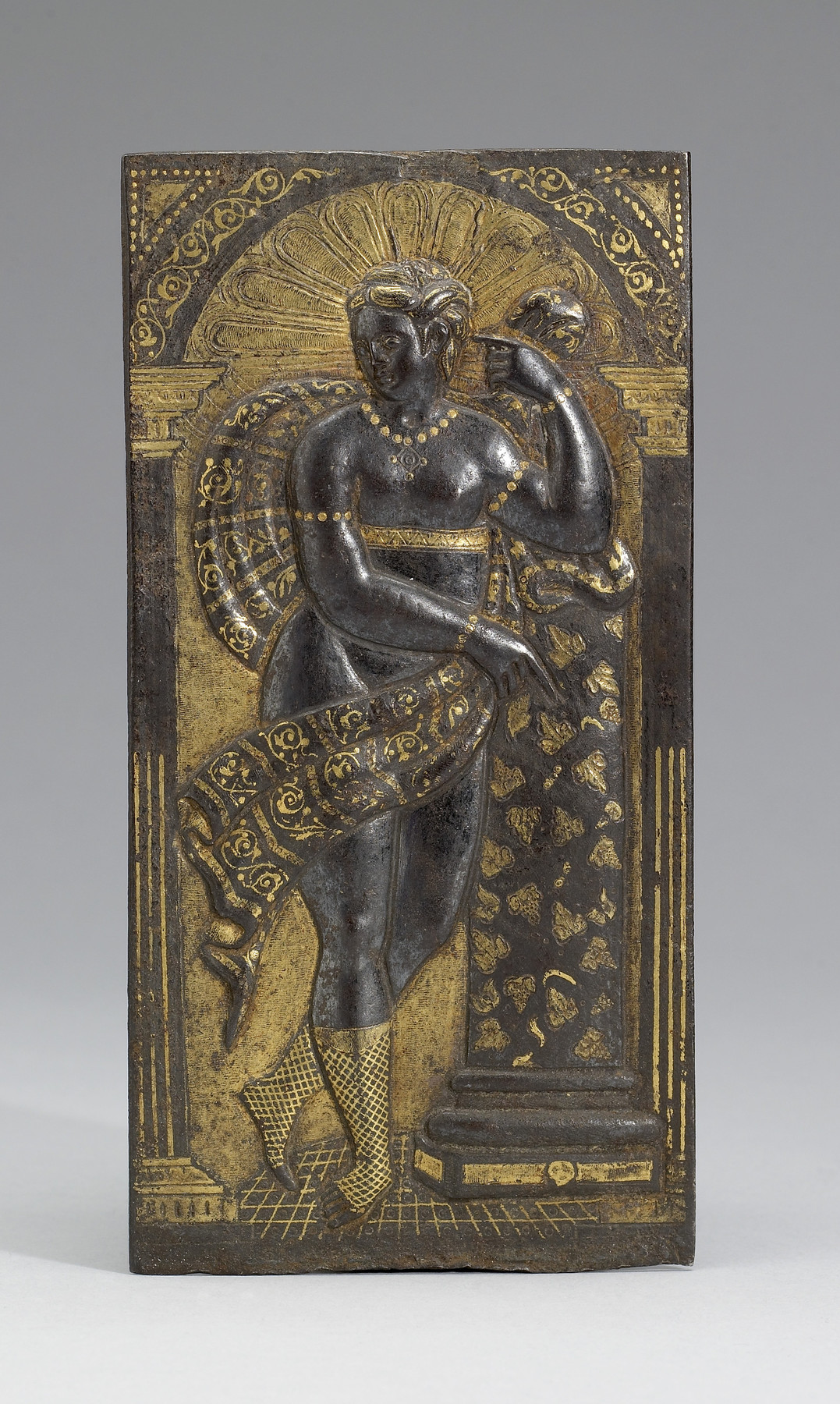Plaque with the Personification of Africa (?)
(Renaissance Europe )
This depiction of a beautiful woman as a hunter (indicated by her footwear) from outside of Europe (signaled by her exotically decorated drapery) is puzzling. Iron was rarely used for art, because it was hard to work, especially to create fine detail. To introduce the detail, sculptors turned to gold. Similar plaques decorated a splendid casket commissioned by Emperor Maximilian II. This use of iron may take advantage of the metal's color to depict a black African, possibly as a personification of the continent Africa, one of the four continents (along with Europe, Asia, and America) then known to Europeans.
Provenance
Provenance (from the French provenir, 'to come from/forth') is the chronology of the ownership, custody, or location of a historical object. Learn more about provenance at the Walters.
Frédéric Spitzer, Paris, by purchase; Sale, Paul Chevallier and Charles Mannheim, April 17, 1893, no. ???; Joseph Brummer, New York, by purchase; Henry Walters, Baltimore, 1929, by purchase; Walters Art Museum, 1931, by bequest.
Geographies
Italy, Milan
(Place of Origin)
Italy, Venice (Place of Origin)
Measurements
5 9/16 x 2 13/16 in. (14.2 x 7.2 cm)
Credit Line
Acquired by Henry Walters, 1929
Location in Museum
Accession Number
In libraries, galleries, museums, and archives, an accession number is a unique identifier assigned to each object in the collection.
In libraries, galleries, museums, and archives, an accession number is a unique identifier assigned to each object in the collection.
52.150






